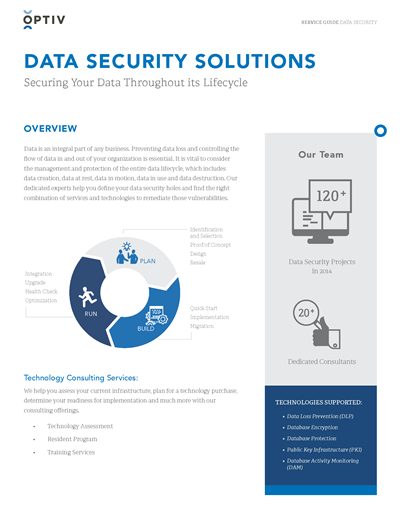The Effect of Effective Data Destruction on Cyber Security Danger Administration
The Effect of Effective Data Destruction on Cyber Security Danger Administration
Blog Article
The Relevance of Effective Data Devastation Practices in Safeguarding Sensitive Details and Ensuring Computer System Safety
In an era where data violations are progressively usual, the significance of reliable data destruction methods can not be overemphasized. Organizations face substantial threats when delicate information is inadequately taken care of, possibly leading to unauthorized gain access to and extreme financial consequences. Carrying out durable information devastation approaches not just minimizes these threats but also straightens with legal compliance requirements, ensuring that organizations support their track record and foster customer trust fund. The inquiry stays: what particular strategies can be used to boost these methods, and just how can organizations effectively incorporate them into their total cybersecurity framework?
Understanding Data Devastation
Recognizing data destruction is critical in today's electronic landscape, where sensitive information can conveniently be compromised. Reliable information destruction involves not merely erasing data yet ensuring that information is irretrievable via comprehensive methods. This process is necessary for companies that take care of personal client info, intellectual building, or inner documents, as any type of violation can result in extreme economic and reputational consequences.
Information devastation encompasses numerous strategies, consisting of shredding physical media, degaussing magnetic storage space devices, and utilizing software-based remedies that overwrite data numerous times. Each technique offers a certain purpose and should line up with the level of sensitivity of the details being dealt with. For instance, physical destruction is often chosen for disk drives consisting of extremely confidential data, while software program approaches may be enough for less delicate details.
Moreover, adhering to market standards and guidelines, such as the General Data Defense Policy (GDPR) or the Wellness Insurance Policy Portability and Liability Act (HIPAA), is critical for conformity and to reduce lawful risks. Organizations has to develop a durable information destruction plan, train employees on best techniques, and on a regular basis investigate their treatments to ensure that all delicate information is disposed of securely and effectively.
Threats of Inadequate Practices
Insufficient information damage methods expose companies to substantial risks that can have significant effects. When delicate info is not correctly gotten rid of, it continues to be at risk to unauthorized access, which can result in data breaches and identification burglary. Such occurrences not only endanger the safety and security of individuals yet additionally taint the company's reputation, causing a loss of client depend on and prospective economic repercussions.
Moreover, regulative compliance is significantly strict in several industries. Failing to stick to information destruction laws can cause substantial fines and lawful actions versus organizations. These fines can strain monetary sources and draw away focus from core company procedures.
Additionally, the misuse of recurring information can lead to intellectual residential or commercial property theft or company reconnaissance, jeopardizing competitive benefits (data destruction). The effect of insufficient data destruction expands beyond prompt financial losses; it can also result in long-term damage to brand stability and market position

Organizations should acknowledge that data protection is not entirely regarding avoiding breaches; it likewise encompasses the responsible administration of data throughout its lifecycle. Disregarding efficient data damage protocols can have tragic ramifications, highlighting the necessity for durable procedures to reduce these risks.
Best Practices for Data Destruction
Carrying out effective information destruction practices is necessary for safeguarding sensitive info and maintaining compliance with governing requirements. Organizations should embrace a multi-faceted method to guarantee that information is irretrievable, thus avoiding unauthorized gain access to and possible violations.
First, data must be categorized based upon sensitivity, allowing companies to apply appropriate devastation methods customized to the level of threat. For electronic data, using software-based data-wiping devices that abide by sector criteria can effectively overwrite existing information. Physical devastation approaches, such as shredding or degaussing, are essential for devices that keep sensitive info, making certain full obliteration.
Developing a clear information retention policy is important, detailing the length of time different sorts of details need to be maintained prior to damage. Routine audits of data storage systems are also required to determine unnecessary or obsolete information needing removal.
In addition, training workers on the importance of information devastation and the particular methods to comply with fosters a culture of security within the company. Lastly, maintaining documents of data destruction refines provides liability and supports conformity with exterior guidelines and interior policies. By sticking to these ideal methods, organizations can significantly reduce the risks associated with information direct exposure.
Legal and Compliance Considerations

Failure to adhere to these guidelines can cause extreme fines, including substantial penalties and reputational damages. Organizations should carry out a robust data devastation plan that lines up with these lawful structures and gives clear great post to read standards on the proper methods of data disposal, whether physical shredding or digital wiping.
In addition, maintaining documentation of data destruction tasks is crucial for showing compliance during audits or examinations. By focusing on lawful and conformity considerations, organizations can improve their information safety pose and foster count on with customers and stakeholders, eventually adding to a much more protected data monitoring atmosphere.
Benefits of Effective Information Damage
Effective information damage practices expand past mere conformity; they provide significant benefits to organizations that prioritize them. By guaranteeing that delicate info is irretrievably destroyed, companies alleviate the danger of data violations and the possible monetary repercussions associated with them. This proactive method not only safeguards versus unauthorized gain access to however also improves the general dependability of the company in the eyes of stakeholders and clients.
Executing durable data destruction approaches, such as physical devastation of storage devices or sophisticated information cleaning techniques, adds to the conditioning of an organization's cybersecurity posture. data destruction. It minimizes the probability of intellectual home theft and secures proprietary info, thus keeping an one-upmanship on the market

Verdict
To conclude, effective data devastation practices are crucial for protecting sensitive info and enhancing overall computer system safety and security. By implementing thorough techniques such as shredding, software application, and degaussing overwriting, organizations can minimize the dangers related to unauthorized gain access to and data breaches. Adherence to governing criteria, consisting of GDPR and HIPAA, further enhances compliance and shields against lawful effects. Inevitably, a commitment to robust data destruction techniques promotes a society of obligation, therefore reinforcing a company's cybersecurity stance and maintaining client count on.

Report this page